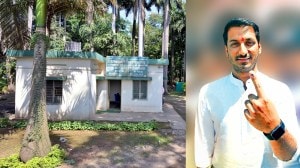No answers yet
A time to mourn,without premature attempts at whodunits.
The assault on the Delhi high court was intended to shake and hurt us,and it did. As the city struggles to cope with the news,and mourn those who were killed,the blame and recrimination has already begun. How could they let it happen here,in the impregnable heart of the capital?
Assigning blame is often the first reflex,given the blurriness of the perpetrators and the terrible cost of their actions. The 26/11 attacks prompted a thorough review of the intelligence,security and enforcement agencies. Strikes like Wednesdays demand a careful,detailed and responsive assessment of the intelligence and law enforcement landscape. In 2009,the home minister announced a bold new security architecture to replace the maze of competing bureaucracies,including NATGRID,a networked intelligence database,the National Counter Terrorism Centre (NCTC),a nodal agency for all counter-terror efforts,and a special National Investigation Agency (NIA). While the NIA is now taking charge of the high court blasts,the other two plans have met a different fate. NATGRID is just starting off,having been stuck with the Cabinet Committee on Security,and NCTC,which should have been operational by late 2010,is still being lobbed between various discussion forums in the government. The NCTC was planned as a central monitoring agency,one that would be ultimately responsible in trolling for clues,professionally piecing together information and acting on it,foiling potential plots.
But discovering and repelling terrorist attacks is not a simple matter of will. Of course,a determined terrorist can sometimes slip through the cordons,and the answers to whether the attack could have been averted do not necessarily lie at the venue of the tragedy. Acts of terror try to blow up our complacencies,destroy what we take for granted. We must separate the grief from the rage,as we take in the news of the bombing. The victims had nothing to do with the agendas of the terrorists,they were simply lawyers,litigants,journalists,bystanders,people making a living,or trying to patiently negotiate their own solutions. A courtroom is a place of implicit trust,of believing that the answers must be sought within the system. That sense of shock,the reeling,is understandable,as we try to comprehend what happened at Delhi high court but the only real response right now is sadness and a reminder that securing ourselves is a tough,long haul.



- 01
- 02
- 03
- 04
- 05




























